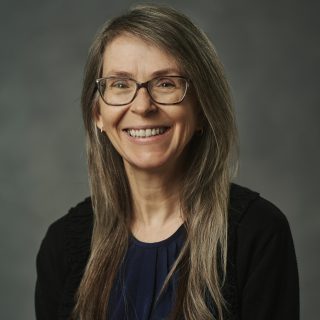Norma and Edwin Seiferle, ca. 1970, Norma K. and Edwin J. Seiferle Visual Arts Collection, Cherokee Garden Library, Kenan Research Center at Atlanta History Center
Two names vital to the history of Georgia’s conservation movement are husband and wife, Edwin and Norma Seiferle. After moving to the Atlanta area in 1958, the Seiferles quickly became involved in conservation and preservation issues and founded several important organizations that serve as vehicles for furthering these causes.
The Seiferles were active advocates at a critical time in the roots of Georgia’s environmental struggles and inspired many to continue to protect Georgia’s valuable wilderness.
Norma Kelton Seiferle held a Masters of Botany from Iowa State University and was passionate about plant conservation and rare and endangered native species. She served as the second president of the Georgia Botanical Society nominated to her surprise by Eugene Heath, the society’s first president. While president of the society, she spearheaded efforts to protect many wilderness areas in the North Georgia mountains as well as the Okefenokee National Wildlife Refuge and Chattahoochee River. She worked to compile extensive surveys of native flora for each Georgia county. Building on this, in 1984 the Georgia Botanical Society published a checklist of vascular plants under the direction of Norma’s close friend, Marie Mellinger. Norma worked as an environmental consultant for IBM Corporation for the building of the company’s new headquarters in Atlanta. She also played a vital role in serving as Grounds Chairman for the design and restoration of the gardens and grounds of Tullie Smith House (now Smith Farm) at Atlanta History Center. In 1965, Norma discovered a previously unknown native azalea in an area of western Fulton County. She named it Rhododendron speciosum ‘Chattahoochee’ (Chattahoochee Azalea) and registered it with American Rhododendron Society in 1982.
Edwin James Seiferle received his Ph.D. in Chemistry from Iowa State University in 1940 and worked in marketing research and product development for the Tennessee Corporation in Atlanta which later became part of Cities Service. Edwin was an avid hiker and was dedicated to protecting the Appalachian Trail. He was an active member of both the Appalachian Trail Conference and the Georgia Appalachian Trail Club for over 30 years. While serving as president of the Georgia Appalachian Trail Club, he helped fight the development of the Blue Ridge Parkway extension to Kennesaw Mountain that would have eliminated a section of the Appalachian Trail in Georgia. Edwin was a founding member and past president of the Georgia Conservancy and worked to secure the purchase and protection of Panola Mountain before it was designated as a state park. He was also active in the protection of the Georgia coast from phosphate mining interests. Edwin founded and served as president of his neighborhood Highpoint Civic Association which expressed concerns over highway development in north Fulton County, such as the GA 400 extension project.
The Seiferles became well known conservationists and served as consultants to State officials as well as the United States Forest Service for park and wilderness development and protection, including the Great Smoky Mountains National Park. They were passionate about preserving Georgia’s natural areas for future generations to come. Besides natural wilderness and native plant interests, the Seiferles collected Native American artifacts which they donated to the South Dakota Art Museum in Brookings, Montana in 1992.
We invite you to learn more about the Seiferles’ legacy in Georgia’s environmental history by exploring their manuscript collection, Norma K. and Edwin J. Seiferle papers (MSS 1050), of the Cherokee Garden Library, housed at Kenan Research Center at Atlanta History Center, along with their many outstanding books, now a part of our collection of more than 32,000 books, photographs, manuscripts, seed catalogs, and landscape drawings.
